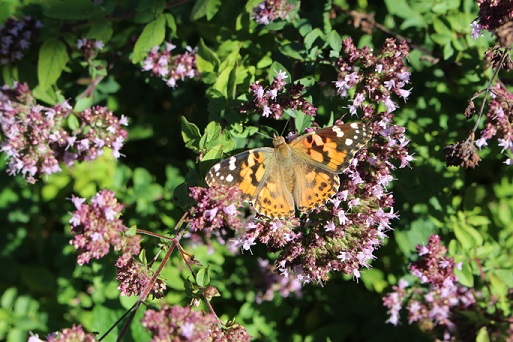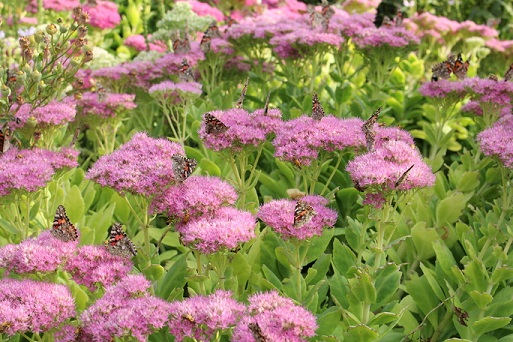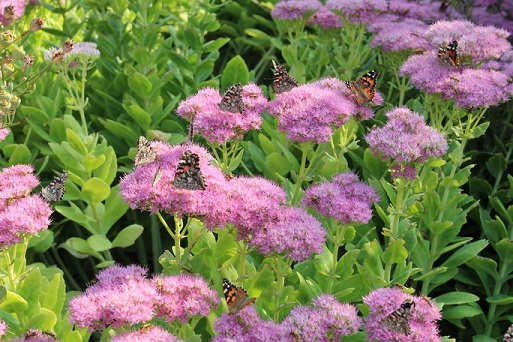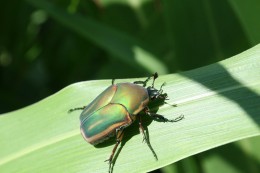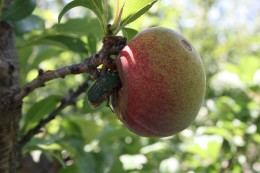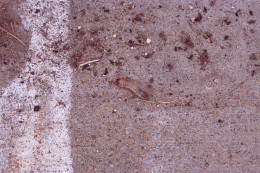–by Dr. Raymond Cloyd
This year, throughout Kansas, we have seen an abundance and wonderful display of painted lady (Vanessa cardui) butterflies. The painted lady butterfly is one of the most common and widely distributed butterflies worldwide. Adults are distinct [and very different looking than the monarch butterfly (Danaus plexippus)] having wings that are mottled brown-yellow, white, brown, and black. There is a row of “small” eyespots on the underside of the hindwings (Figure 1).
Figure 1. Painted Lady Butterfly Adult (Author–Raymond A. Cloyd)
In addition, there is a white crescent on the front edge of the forewing (Figure 2).
Figure 2. Painted Lady Butterfly Adult (Author–Raymond A. Cloyd)
Painted lady adults feed on the nectar of many different plants in flower including sage (Salvia spp.), stonecrop (Sedum spp.) (Figures 3 and 4), butterfly bush (Buddleia spp.), and coneflower (Echinacea spp.).
Figure 3. Painted Lady Butterfly Adults Feeding On Stonecrop (Sedum spp.) Flowers (Author–Raymond A. Cloyd)
Figure 4. Painted Lady Butterfly Adults Feeding On Flowers Of Stonecrop (Sedum spp.) (Author–Raymond A. Cloyd).
The larvae are spiny and feed on the leaves of various plants including sunflower (Helianthus spp.), hollyhock (Alcea rosea), burdock (Arctium spp.), and thistle (Cirsium or Carduus spp.). The painted lady overwinters as an adult; however, most die during the winter (if we have a so-called winter). The painted lady adults migrate northward from the southwest from March through November with two flight periods. In fact, painted lady adults can fly >600 miles. It is possible that the front associated with Hurricane Harvey this year may have “pushed” more adults northward into Kansas. However, this is not the first time Kansas has experienced a plethora of painted lady butterflies. For instance, a migration flight in 1983 was so extensive that butterflies hitting windshields were a hazard to motorists. In addition, a single northward migration contained approximately 3 billion painted lady butterflies. So, just enjoy a wonder of nature…lots of painted lady butterflies.

